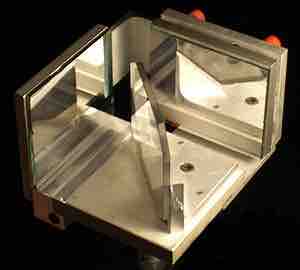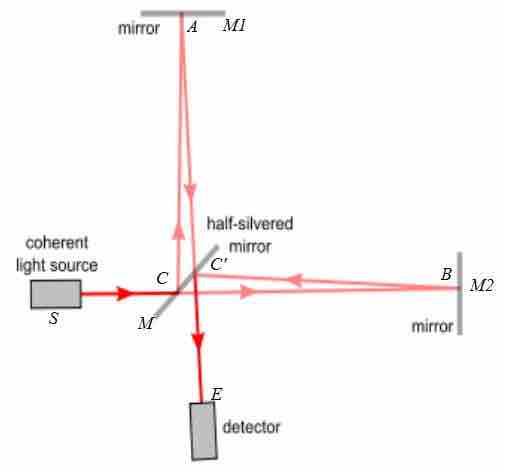Interferometry
Before we can discuss the Michelson Interferometer, it is important we first understand interferometry—which refers to techniques that use superimposed waves to extract information about the waves. More simply, it uses the interference these waves experience to make accurate measurements of the waves. It is used in many areas of science, such as astronomy, engineering, oceanography, physics, and fiber optics.
Popular applications of interferometry in industry include the measurement of small displacements, refractive index changes, and surface irregularities. As shown in previous atoms, when two waves with the same frequency combine, the resulting pattern is determined by the phase difference between the two. Constructive interference occurs when the waves are in phase, and destructive interference occurs when they are out of phase. Interferometry uses this principle to combine waves and study the resulting wave in order to obtain information about the original state of the waves.
The Michelson Interferometer
The most common tool in interferometry, the Michelson Interferometer, shown in Figure 1 , was invented by Albert Abraham Michelson, the first American to win a Nobel Prize for science. The interferometer works by splitting a beam of light into two paths, bouncing them back and then recombining them to create an interference pattern. To create interference fringes on a detector (see Figure 2 ), the paths may be different lengths or composed of different materials.

Fringes in a Michelson Interferometer
Colored and monochromatic fringes in a Michelson interferometer: (a) White light fringes where the two beams differ in the number of phase inversions; (b) White light fringes where the two beams have experienced the same number of phase inversions; and (c) Fringe pattern using monochromatic light (sodium D lines).

Michelson Interferometer
A Michelson Interferometer.
Figure 3 shows a diagram of how a Michelson Interferometer works. M1 and M2 are two highly polished mirrors, S is the light source, M is a half silvered mirror that acts as a beam splitter when the light hits the surface, and C is a point on M that is partially reflective. When the beam S hits this point on M it is split into two beams. One beam is reflected in the direction of A and the other is transmitted through the surface of M to the point B. A and B are both points on the highly polished (and therefore reflective) mirrors M1 and M2. When the beams hit these points, they are then reflected back to point C', where they recombine to produce an interference pattern. At point E, the interference pattern produced at point C' is visible to an observer.

Figure 3
This diagram of a Michelson Interferometer shows the path that the light waves travels in the instrument.
Applications
The Michelson Interferometer has been used for the detection of gravitational waves, as a tunable narrow band filter, and as the core of Fourier transform spectroscopy. It has played an important role in studies of the upper atmosphere, revealing temperatures and winds (employing both space-borne and ground-based instruments) by measuring the Doppler widths and shifts in the spectra of airglow and aurora. The best known application of the Michelson Interferometer is the Michelson-Morley experiment—a failed attempt to demonstrate the effect of the hypothetical "aether wind" on the speed of light. Their experiment left theories of light based on the existence of a luminiferous aether without experimental support, and served ultimately as an inspiration for special relativity.